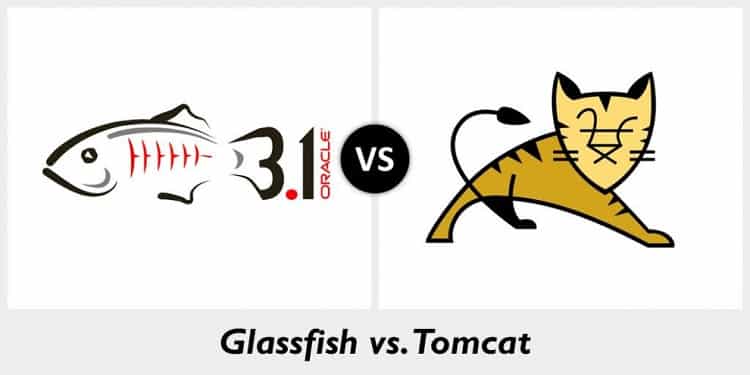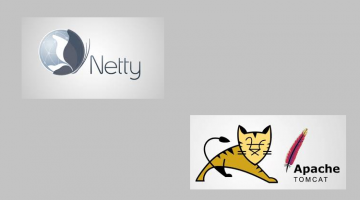GlassFish
GlassFish is the open source application server provided by Sun Microsystems for the applied science platform in Java. It was originally released by Sun in 2005. On May 4, 2006, the GlassFish project released the initial version that supports the specification of five applied Java sciences. It is currently available for versions 3.1, 3.1, 3.2 and 4.0, with themes revolving around the group, Virtualization, and integration with Coherence and other Oracle technologies. It is fast, secure, production quality, high expandability, leading Java EE containers in the industry. Hire freelancers online to help in coding
The overview is a free software system, which is below 2 free software system licenses: the CDDL and the General Antelope Public License (GPL). It is also commercially compatible to add an enterprise-grade application server to the options offered to the open source community and is based on inspiration as defined by the Sun Java System AppServer.
Features and Resources
GlassFish Server 4.1 provides a server for the development and preparation of Java ™ Platform Enterprise Edition (Java EE) and dynamic and scalable HTML5 applications. Key features include applied science Java seven compatibility, modularity, and rapid repetitive development.
Main Features
GlassFish Server supports Java EE seven, which provides the basis for delivering dynamic and scalable hypertext language applications. For example, the Java API for WebSocket allows bidirectional low-latency communication. The Java API for JSON processing simplifies information analysis for transportable applications. The Java API for RESTful Net Services two.0, the performance utilities for Java EE and Servlet 3.1 add competency options to change extremely scalable applications to handle additional HTML5 buyers at the same time.
Java EE seven and GlassFish Server four.1 embrace the following new and updated Java applied science standards:
- New or Significant Updates
- Java API for processing JSON (JSON-P)
- Java API for WebSocket
- Batch application for Java platform
- Java EE Competency Utilities
- Java Message Service (JMS) 2.0
- Java API for RESTful Net Services (JAX-RS)
Updated
- Enterprise Java Beans (EJB) 3.2
- Contexts and Dependency Injection for Java EE (CDI) one.2
- Java Persistence API (JPA) 2.1
- Java Server Faces (JSF) 2.2
- Java Servlet 3.1
- Bean Validation (BV) 1.1
- Language of expression (EL) 3.0
- Interceptors 1.0
- Java Transaction (JTA) one.2
- Java Server Pages (JSP) 2.3
- JavaMail 1.5
Modularity
The modular design of GlassFish Server is based primarily on the standards of the OSGi Alliance and ensures that the GlassFish Server only starts with the modules than the square footage required for applications that only measures the measurement. As a result, the boot times and the memory consumption decrease. There are lots of his services available as freelance services.
Fast repetitive development
Using fashion days, such as NetBeans and Eclipse, the web application development cycle is simplified for the browser-edit-save-update. The GlassFish server allows such a simple development cycle for protocol session data protection communication when an existing application is redistributed.
Apache Tomcat
Apache house cat (or Jakarta Tomcat or just Tomcat) is an implementation of the open source software system for Java Servlet and JavaServer Pages technologies. The Java Servlet and JavaServer Pages specifications are developed under the Java Community method. It is very spoken in Java community. In general, applications running on Tomcat can run without interruption in GlassFish. Tomcat supports Windows wrappers and original OS for platform integration. If you hire freelancers online now, they can help you with this code.
A fully supported Apache Tomcat server allows developers to effortlessly create and check connected Web applications today. It also simplifies the Tomcat organization and the provisioning tasks for Tomcat administrators. Tomcat Server is built with 100% Tomcat, with no changes to the Tomcat source code. Apache Tomcat is the most widely used application server in the world, with more than one million downloads per month and more than 70% The market data center of the company. Apache Tomcat has developed its recognition with application developers because of its lack of light effort, providing an application platform with no price or difficulty for JEE legal platforms. Because applications are launched to groups of numerous production servers, administrators need tools to automate and control the application release procedure, reducing the grueling manual work and the often-resulting errors. In addition, administrators and developers alike require visibility into complete performance metrics to pinpoint performance issues before firing and deciding quickly without relying on presumption. The Tomcat server provides these robust features as well as extensive customization features, which is why it has become such a popular application platform. Get one as freelance services today.
Benefits of Tomcat Server:
The main benefit to this is flexibility. For example, if you want to run Apache on a physical server, but the Tomcat service and the actual Tomcat JSP and servlets on another machine, you can. Some companies use this method to provide an additional level of security, with the Tomcat server behind another firewall only accessible from the Apache server. Stability is more of an advantage. If a significant failure in Tomcat caused it to fail completely, it would not make your entire Apache service unusable, just its servlets and JSP pages.
Primary Difference between GlassFish and Tomcat
Tomcat is simply an HTTP server and a Java servlet container. Glassfish is a complete Java EE application server, including an EJB container and all the other features of this stack. Tomcat has a lighter memory footprint (~ 60-70 MB), while these Java EE servers weigh in hundreds of megs. Tomcat is very popular for simple web applications or applications that use frameworks like Spring that do not require a full Java EE server. By comparison, Tomcat server administration is easier than Glassfish administration, since there are fewer moving parts in Tomcat.
GlassFish
GlassfishGlassfish is a complete Java EE application server, including an EJB container and all the other features of this stack. It comes from Oracle and, therefore, each new specification will be tested and implemented with Glassfish first.
Tomcat
TomcatTomcat is simply an HTTP server and a Java servlet container. It is run by the Apache community. Tomcat is open source and free. Supports all Java EE technologies. It is not compatible with any commercial support, but only supported by the community.
Key Differences
Tomcat is simply an HTTP server and a Java servlet container. Glassfish is a complete Java EE application server, including an EJB container and all the other features of this stack.
- Tomcat has a lighter memory footprint, compared to Glassfish.
- Tomcat has a memory of 60-70 MB, while these Java EE servers weigh in hundreds of Megs.
- Tomcat is very popular for simple web applications, as compared to Glassfish.
- By comparison, Tomcat server administration is easier than Glassfish administration, since there are fewer moving parts in Tomcat.
- Both Tomcat and Glassfish are open sources and free, but they have different licenses.
- Glassfish is licensed with double, while Tomcat has a unique license.
- Tomcat uses the Apache license while Glassfish was licensed under CDDL and GPL.


